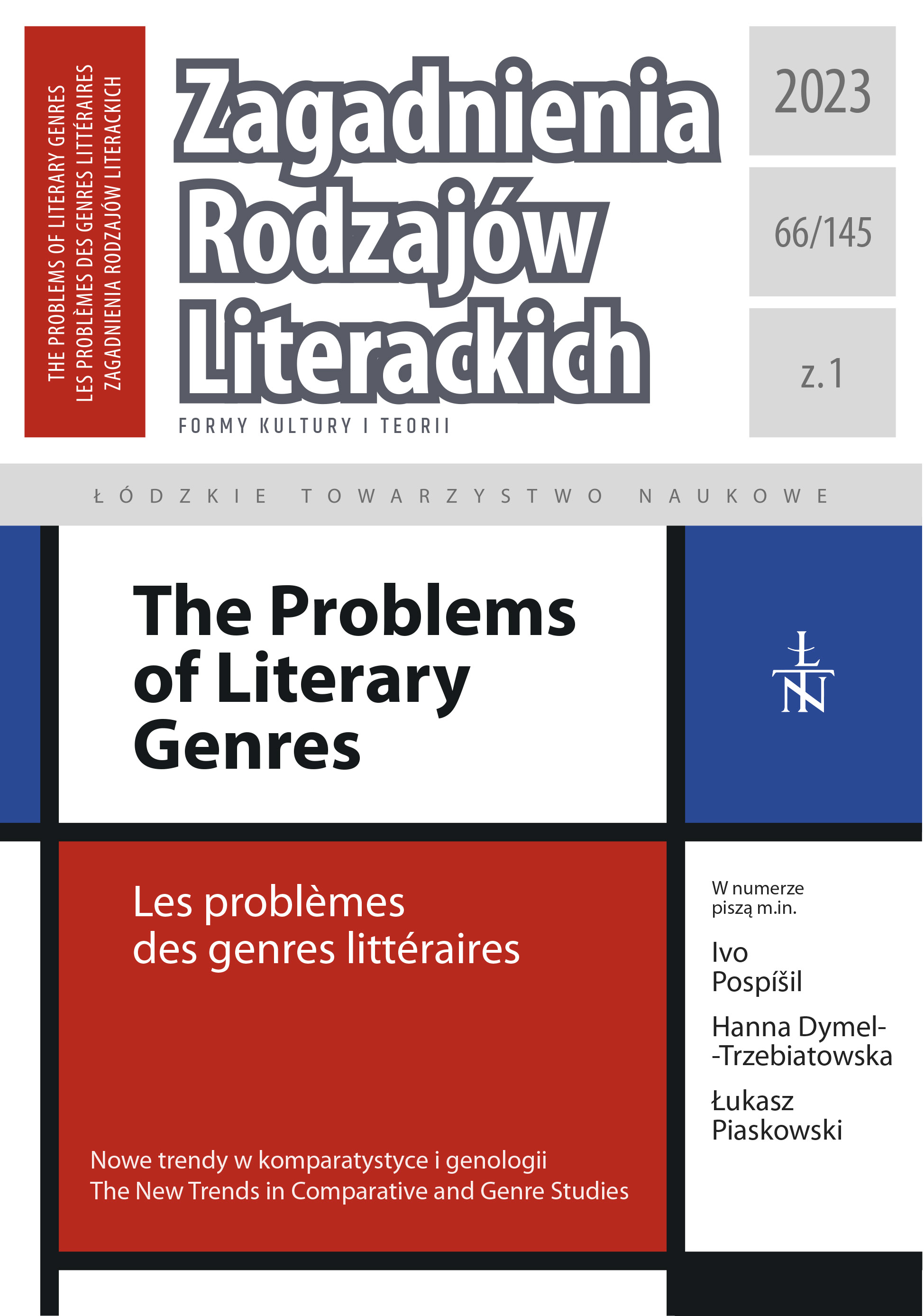Widma Salem. Czarownice z Salem Arthura Millera jako metafora amerykańskiej polityki lat 50. XX wieku
DOI:
https://doi.org/10.26485/ZRL/2022/66.1/26Słowa kluczowe:
witches; Salem; Arthur Miller; play; hauntology; politics; witch-hunts; McCarthyismAbstrakt
The following article is an analysis of the events in the 1950s that influenced American playwright Arthur Miller to write the play The Crucible. Miller, known for his negative attitude to the activities of Senator Joseph McCarthy and other conservative politicians, decided to metaphorically depict the horror of the second “red scare,” its impact on society and the mechanisms of power behind the hunt, using the witch trials that took place in the town of Salem in 1692. Necessary for understanding Miller’s drama is the essence of the American political scene at the time and the goals that were to be achieved by causing the panic. The article focuses on the similarities between the historical phenomenon that was the witch hunts and the era of McCarthyism. In addition, it addresses the impact of McCarthy’s activities on the issue of women’s rights and the common denominator linking the “red scare” and the hunts themselves — their misogynistic nature. The article also seeks to provide insight into the way in which both Miller’s drama and the events of the 1950s sought to create an enemy that could be helpful in managing society and its fears. Miller’s drama and the post-war history of the US are examined through the lens of Adam Curtis’ documentaries and Mark Fisher’s theory of hauntology.
Liczba pobrań
Bibliografia
Adams Gretchen (2003), The Spectre of Salem in American Culture, „OAH Magazine of History” nr 17.
Berwiński Ryszard (1853), Studia o literaturze ludowej, nakładem autora, Poznań.
Debord Guy (2006), Społeczeństwo Spektaklu oraz Rozważania o społeczeństwie spektaklu, przeł. M. Kwaterko, Państwowy Instytut Wydawniczy, Warszawa.
Curtis Adam (2004) [film], The Power of Nightmares. Part 1: „Baby It’s Cold Outside”, British Broadcasting Company, Londyn.
Curtis Adam (2009) [film], It Felt like a Kiss, British Broadcasting Company, Londyn.
Federici Sylvia (2004), Caliban and the Witch, Autonomedia, Nowy Jork.
Herbert Zbigniew (1962), Barbarzyńca w ogrodzie, Spółdzielnia Wydawnicza Czytelnik, Warszawa.
Komar Michał (1980), Czarownice i inni, Wydawnictwo Literackie, Kraków.
MacFarlane Allan (1970), Witchcraft in Tudor and Stuart England, Routledge, Londyn.
Miller Arthur (1953), The Crucible, Penguin Books, Nowy Jork.
Morgan Edmund (2008), Arthur Miller’s The Crucible and the Salem Witch Trials: A Historian’s View [w:] Arthur Miller’s the Crucible, red. H. Bloom, Infobase Publishing, Nowy Jork.
Schiff Stacy (2015), The Witches, Salem, 1692. A History, Little, Brown and Company, Boston.
Schrecken Ellen (2003), Many are the Crimes: McCarthyism in America, Little, Brown and Company, Boston.
Storrs Landon (2007), Attacking the Washington „Femmocracy”: Antifeminism in the Cold War Campaign against Communists in Government, „Feminist Studies” nr 33.
Talbot David (2015), Devil’s Chessboard: Allen Dulles, the CIA and the Rise of America’s Secret Government, HarperCollins, Nowy Jork.
Žižek Slavoj (2009), First as Tragedy, Then as Farce, Verso Books, Londyn.
Pobrania
Opublikowane
Wersje
- 2023-09-14 - (2)
- 2023-09-14 - (1)
Jak cytować
Numer
Dział
Licencja
Prawa autorskie (c) 2023 Łódzkie Towarzystwo Naukowe i autorzy

Utwór dostępny jest na licencji Creative Commons Uznanie autorstwa – Użycie niekomercyjne – Bez utworów zależnych 4.0 Międzynarodowe.







